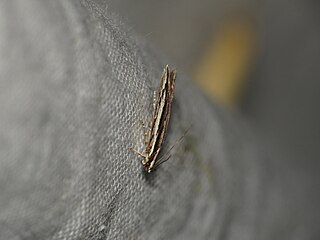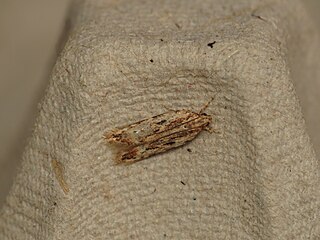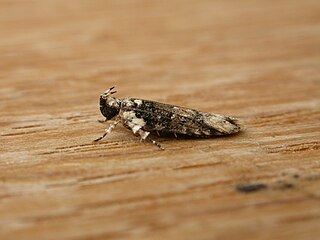Ardozyga aeolopis is a species of moth in the family Gelechiidae. It was described by Edward Meyrick in 1904. It is found in Australia, where it has been recorded from New South Wales.
Ardozyga amblopis is a species of moth in the family Gelechiidae. It was described by Edward Meyrick in 1904. It is found in Australia, where it has been recorded from Western Australia.

Ardozyga catarrhacta is a species of moth in the family Gelechiidae. It was described by Edward Meyrick in 1904. It is found in Australia, where it has been recorded from New South Wales.
Ardozyga compsochroa is a species of moth in the family Gelechiidae. It was described by Edward Meyrick in 1904. It is found in Australia, where it has been recorded from South Australia and New South Wales.

Ardozyga obeliscota is a species of moth in the family Gelechiidae. It was described by Edward Meyrick in 1904. It is found in Australia, where it has been recorded from Victoria.
Ardozyga pelogramma is a species of moth in the family Gelechiidae. It was described by Edward Meyrick in 1904. It is found in Australia, where it has been recorded from Victoria.

Ardozyga sisyraea is a species of moth in the family Gelechiidae. It was described by Edward Meyrick in 1904. It is found in Australia, where it has been recorded from Victoria.
Ardozyga stratifera, the striped ardozyga moth, is a species of moth in the family Gelechiidae. It was described by Edward Meyrick in 1904. It is found in Australia, where it has been recorded from Queensland, New South Wales, Victoria, Tasmania, South Australia and Western Australia.
Ardozyga tabulata is a species of moth in the family Gelechiidae. It was described by Edward Meyrick in 1904. It is found in Australia, where it has been recorded from New South Wales and South Australia.
Ardozyga telopis is a species of moth in the family Gelechiidae. It was described by Edward Meyrick in 1904. It is found in Australia, where it has been recorded from New South Wales.
Ardozyga thyrsoptera is a species of moth in the family Gelechiidae. It was described by Edward Meyrick in 1904. It is found in Australia, where it has been recorded from Queensland.
Ardozyga trichosema is a species of moth in the family Gelechiidae. It was described by Edward Meyrick in 1904. It is found in Australia, where it has been recorded from Western Australia.

Ardozyga sodalisella is a species of moth in the family Gelechiidae. It was described by Francis Walker in 1864. It is found in Australia, where it has been recorded from Queensland and New South Wales.
Ardozyga deltodes is a species of moth in the family Gelechiidae. It was described by Oswald Bertram Lower in 1896. It is found in Australia, where it has been recorded from Victoria and New South Wales.
Ardozyga haemaspila is a species of moth in the family Gelechiidae. It was described by Oswald Bertram Lower in 1894. It is found in Australia, where it has been recorded from New South Wales and South Australia.
Ardozyga tridecta is a species of moth in the family Gelechiidae. It was described by Oswald Bertram Lower in 1900. It is found in Australia, where it has been recorded from South Australia.
Ardozyga thermoplaca is a species of moth in the family Gelechiidae. It was described by Oswald Bertram Lower in 1902. It is found in Australia, where it has been recorded from Victoria.
Catoryctis eugramma is a moth in the family Xyloryctidae. It was described by Edward Meyrick in 1890. It is found in Australia, where it has been recorded from New South Wales and Queensland.
Eupselia leucaspis is a moth in the family Depressariidae. It was described by Edward Meyrick in 1906. It is found in Australia, where it has been recorded from South Australia and Western Australia.
Eupselia theorella is a moth in the family Depressariidae. It was described by Edward Meyrick in 1880. It is found in Australia, where it has been recorded from New South Wales.




